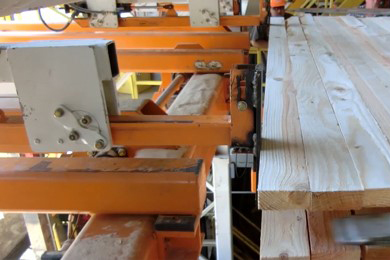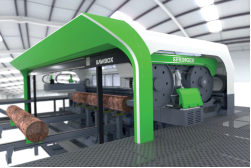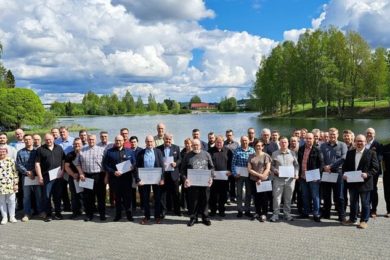A legacy Lunden-brand stacker is due to receive major technology updates to improve its performance and reliability, and bring it up to today’s standards in a most effective manner to maintain high production. The existing stacker was installed in 1991 and has offered many years of reliable performance. Newer electric servo actuation technology is now affording more efficient performance.
Thompson River Lumber is located at Thompson Falls, MT and produces dimensional lumber from its Ponderosa Pine stock. The sawmill stacker is required to stack lumber tiers of 60″ wide, 72″ high, and 20′ long, weighing in the range of 20,000 lbs. Stacking rate is 16 cycles/min.
Updates will include the Stick Feeder to synchronize feeder timing to the distribution chain, improve feeding of damaged or bent sticks, increase stick feeder cycle and replace wear parts. The addition of a secondary hold-down eliminates double feeds at speeds of over 220 sticks per minute.
The existing Stick Lift and Shuttle movement will be converted to electric servo motor actuation. The stick lift is no longer cam driven or tied mechanically to any other part of the stacker, which allows the stick lift process to be infinitely adjustable. Shuttle movement is also servo driven.
The Fork Carriage will be updated; the existing fork drive linkage will be replaced with a new fork drive shaft, servo fork drive unit with servo rated reducer, and a new fork carriage frame with pivoting forks and new stick pans. The existing hydraulic Rake-Off assembly will be replaced with an electric actuated rake-off assembly, including encoder feedback.
The Fork Lift Drive will be replaced with a servo fork lift shaft drive unit, including a new motor mount frame assembly, and a new poly chain sprocket will be supplied for the lift shaft.
The Overhead Course Divider and Tier Stop will be updated to all new components with electric actuation.
Finally, a Random Width Pull-Back upgrade will be installed providing uniform downstream stack face and/or spreading of random width boards.
These updates are scheduled to be installed in Q2 of 2022.







